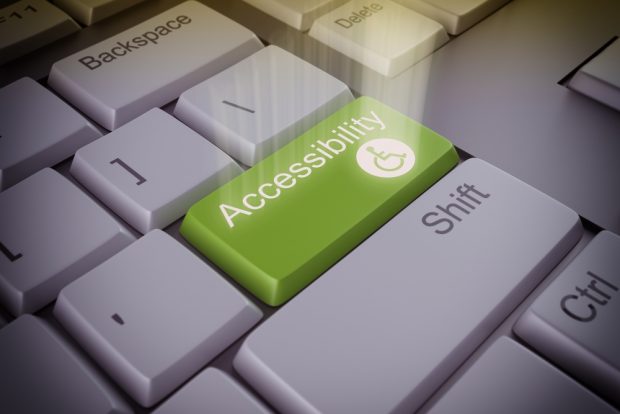 The years-long wave of lawsuits over credit union website accessibility may have flattened out in 2019, but some credit unions may have work to do in 2020 if they want to avoid the undertow of what is still a strong current of risk, two industry attorneys warned.
The years-long wave of lawsuits over credit union website accessibility may have flattened out in 2019, but some credit unions may have work to do in 2020 if they want to avoid the undertow of what is still a strong current of risk, two industry attorneys warned.
The wave started in 2017 when plaintiffs across the country began filing dozens of lawsuits against credit unions. Those suits essentially contended that the credit unions' websites didn't comply with the Americans with Disabilities Act because they allegedly lacked certain pieces of code or features for visually-impaired users. Most cases settled, but courts also dismissed several suits after a relative handful of credit unions chose to fight the allegations.
Relatively speaking, things have been quieter since those decisions began rolling in during 2018 and 2019.
 Joseph Lynett
Joseph Lynett"We aren't seeing new website accessibility cases filed against credit unions," said attorney Joseph Lynett, whose firm Jackson Lewis represented some of the credit unions involved in the suits. "That's not to say that it can't happen. Certainly in the environment that we're in with these website accessibility cases, almost anything could happen."
However, a key factor in the success some credit unions have had in court is that, generally speaking, the plaintiffs weren't members and weren't part of the credit unions' fields of membership. In turn, some judges said, those plaintiffs had no standing to sue.
The tables could turn, though, if an existing member decides to sue a credit union that hasn't made its website accessible.
It's possible that one or two lawsuits could surface, "because presumably there are blind members of the thousands of credit unions that are out there," Lynett explained.
 John Bredehoft
John Bredehoft"If our credit unions start getting sued by people who are members of the credit union, we're not going to have that get-out-of-jail-free card," added attorney John Bredehoft, whose firm Kaufman & Canoles also represented several credit unions.
There are three things that might help credit unions stay out of trouble in 2020, however, according to Lynett and Bredehoft.
1. Keep focusing on online accessibility.
The lawsuits may have dwindled, but credit union website accessibility is still a priority. The ADA prohibits discrimination on the basis of disability for equal enjoyment of goods, services, facilities, privileges, advantages or accommodations in public places, and at least one court – the Ninth Circuit Court of Appeals – has indicated that certain types of websites must indeed comply with the ADA, Bredehoft noted.
It's essentially the law now in the western states covered by the Ninth Circuit, according to Bredehoft. "California by itself is a big chunk of change," he added. "The Ninth Circuit doesn't govern anything outside of the Ninth Circuit, but it's a fairly prominent court, and people will be inclined to follow it or to try harder to distinguish it."
Credit unions, even if they don't do business in the western U.S., should take heed, Lynett also warned.
"So in the Ninth Circuit, and really almost everywhere in the country now, I think, the days of challenging whether websites are required to be accessible under Title III of the ADA – the days of making that argument that they're not – I think are past us," he said.
The problem remains, however, that there's no official list of what exactly makes a website accessible, he noted. For many, compliance for now means conforming to a particular set of private standards, such as the World Wide Web Consortium's Web Content Accessibility Guidelines (WCAG).
"What I've been urging and advising clients to do – and they have almost uniformly done it – is to make sure that the websites are accessible to meet the WCAG 2.0 AA standards," Bredehoft said. "They're not all that hard. And the few thousand dollars it takes to do that is much cheaper than getting a lawyer even to negotiate a settlement."
"Really the WCAG is the de facto standard," Lynett added. "It may not be a regulatory standard, but it does seem to be the de facto standard. It seems to be the accessibility standard that most companies and web consultants refer to when improving website accessibility."
2. Scrutinize your mobile app.
So far, much of the discussion about credit unions' digital accessibility has focused on websites, but credit unions also need to think about the accessibility of their mobile apps in 2020.
Part of the issue, Bredehoft noted, is that even the WCAG standards themselves aren't worded in a way that reflects the modern realities of mobile apps.
"For example, one of their guidelines says, 'Make all functionality available from a keyboard.' And you really can't do that on a phone app," he explained. "So if we see additional suits, they'll be filed by people who are trying to order it over our app or over the phone, because we haven't and can't implement the WCAG standards on a phone app. And we'll be seeing it by members who are trying to access us over the phone. Now, if a credit union has an accessible webpage and information on the phone app in giant black letters on white contrast saying, 'If you have problems, call us,' do I think that's a violation of the ADA? No, I don't. But that's just me."
The accessibility of credit union kiosks and other self-service digital offerings are also things to consider, Lynett added.
"Technology in its own inimitable way has always moved faster than the law can catch up with it," he said, adding, "As technology evolves, we're going to just have the evolution of these claims. We probably will see more mobile app claims."
Accessibility is something to consider during the design stage, Lynett noted. "I think it's probably a good idea to bake into that process accessibility as well, because the easiest time to address accessibility is when you're actually creating the technology," he said.
3. Stay calm.
Though the threat of litigation still exists for credit unions, 2020 may be relatively more manageable than previous years.
"I would say out of all the things that you worry about and should worry about as a leader of a federal credit union, this should probably not be on the top 10 list, frankly," Lynett said. "It's something that should be on the list because credit unions rely on technology to better serve their members, but I don't know that it should keep the leader of a federal credit union up at night."
Of course, one reason more credit union leaders may be sleeping better is that their credit unions' websites are more accessible than they were even a year ago.
"It's not that the credit unions didn't want them to be accessible, it's just that this was not on anyone's radar," Bredehoft said. "The cases have put it on the radar. And I think now if somebody sued, 99.9% of my clients could say, 'We're accessible.'"
© Touchpoint Markets, All Rights Reserved. Request academic re-use from www.copyright.com. All other uses, submit a request to [email protected]. For more inforrmation visit Asset & Logo Licensing.






